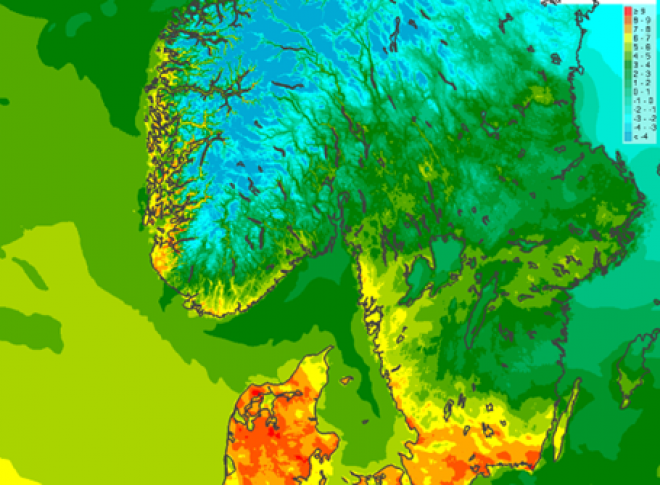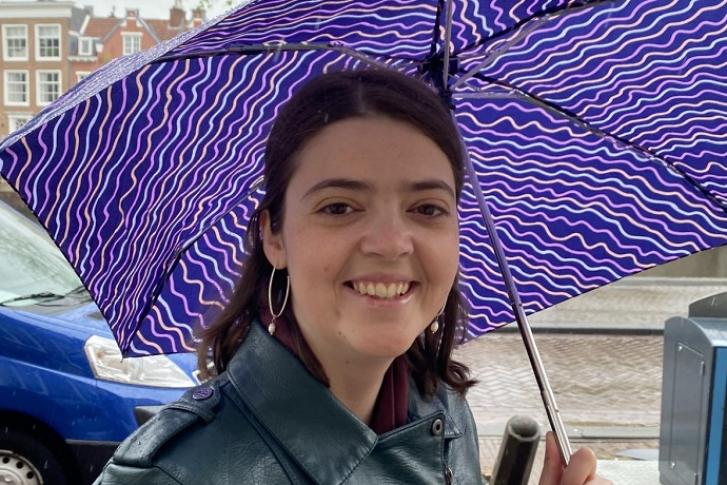

One of the goals of MAELSTROM is to produce production-ready machine learning applications for weather and climate. At the end of February this year, MET Norway launched a deep-learning model developed by MAELSTROM on their public weather app Yr . This model—a U-Net with 1.3 million parameters—predicts 2 meter temperature for the Nordics for up to 58 hours into the future. The model combines information from a high-resolution numerical weather prediction model and temperature measurements from Netatmo’s network of citizen weather stations to create locally accurate predictions.
Thanks to MAELSTROM, the 6 million unique Yr users we have in Norway, Sweden, Denmark, Finland, Estonia, Latvia, and Lithuania can enjoy more accurate temperature forecasts to better plan their day.

Weather forecasting is undergoing a transformation by integrating artificial intelligence (AI) into traditional physics-based models. Mariana Clare, a mathematician from the University of Oxford, specialized in numerical methods and fluid modeling, intertwining mathematics with real-world applications. Her journey led to a PhD in simulating coastal erosion and waves, during which she explored machine learning for weather prediction. Joining the European Centre for Medium-Range Weather Forecasts (ECMWF) in 2022, Mariana focused on enhancing forecast uncertainty information for the Destination Earth initiative. She pioneered the development of the AI-based Integrated Forecasting System (AIFS), which derives weather forecasts from past developments rather than physical laws. By introducing noise into machine-learning models, Mariana aims to create a reliable ensemble forecasting system. Despite its computational efficiency and promising performance, the AIFS requires further development to match the breadth and resolution of traditional models. Mariana envisions a future where physical and machine-learning models complement each other in providing high-resolution, accurate forecasts.

ECMWF will hold a workshop together with ESA's European Space Research Institute:
Machine Learning for Earth System Observation and Prediction
7-10 May 2024 | ESA/ESRIN, Frascati (IT) | Free to attend
The workshop aims to explore the integration of machine learning (ML) and deep learning (DL) techniques with traditional Earth System Observation and Prediction (ESOP) methods. It highlights the significant advancements and potential synergies between ML/DL and conventional tools in satellite observations, weather and climate models, and post-processed model outputs. By leveraging ML/DL, researchers aim to enhance understanding and prediction capabilities of Earth's dynamics, contributing to goals such as the European Commission's Green Deal and Digital Strategy. The workshop spans four days and includes oral and poster presentations, along with parallel working groups aimed at addressing challenges, proposing solutions, and determining future directions in ML/DL for ESOP. The workshop seeks to generate a comprehensive report to advance the fusion of ML/DL with traditional ESOP techniques.
See workshop details | Register here
How are we doing? We're collecting feedback. How useful are our apps and datasets? How easy is it to access them and work with them? Please take the time and complete our survey.
We will host our second workshop and second bootcamp next week at the premises of ECMWF in Reading, UK. We're thrilled to have gotten 242 registrations from 59 (!) countries on 6 continents!